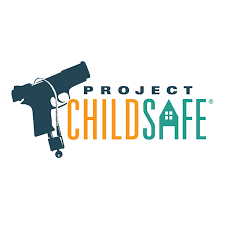Public Safety and Community Resources
Violence Intervention and Prevention
Contact Info
Monserrat Cabral
Acting Public Safety Manager
Public Safety and Community Resources
Project ChildSafe
According to the American Academy of Pediatrics, “Firearms are now the leading cause of death for U.S. children and teens under the age of 18. Between 2015 and 2022, there were at least 2,802 unintentional shootings by children aged 17 and younger. These resulted in 1,803 deaths and 1,815 nonfatal gun injuries, nearly among other kids. And at least 895 preschoolers and toddlers managed to find a gun and unintentionally shoot themselves or someone else during this time.” Children’s natural curiosity may lead them to explore hiding places, putting them at risk of finding unsecured guns. California requires gun owners to safely store firearms to avoid criminal liability if a child accesses a loaded gun. To protect children, all guns should be unloaded and locked, with ammunition stored and locked separately. Keys and combinations to lock boxes and gun safes should be inaccessible to kids. Do not keep loaded, unlocked firearms in vehicles.
Free Gun Safety Locks
Free gun safety kits offered in partnership with Project ChildSafe, the Antioch Police Department, and the Department of Public Safety and Community Resources can help securely store firearms. Funded by the Department of Justice and the firearms industry, Project ChildSafe has distributed millions of kits with safety information and cable-style gun locks that fit most handguns, rifles, and shotguns. The goal is to prevent unauthorized access, especially by children. The gun locks are available at the following location:
*Department of Public Safety & Community Resources
4703 Lone Tree Way, Antioch, CA
TEN TIPS FOR FIREARM SAFETY IN YOUR HOME FROM PROJECT CHILDSAFE
- Always keep the firearm’s muzzle pointed in a safe direction. A “safe direction” means that the gun is pointed so that even if an accidental discharge occurred, it would not result in injury.
- Always keep your finger off the trigger until you intend to shoot. When handling a gun, rest your finger outside the trigger guard or along the side of the gun. Don’t touch the trigger until you are ready to fire.
- Firearms should be unloaded when not actually in use. Whenever you pick up a gun, such as when removing it from or returning it to storage, remember to point it in a safe direction and make sure it is unloaded.
- Be sure you know how your firearm operates: read the manual on your firearm, know how to safely open and close the action of the firearm, and know how to safely remove any ammunition from the firearm and its magazine.
- Store your firearms in a locked cabinet, safe, gun vault, or storage case when not in use, ensuring they are inaccessible to children and cannot be handled by anyone without your permission.
- Store your ammunition in a locked location separate from firearms.
- Use a gun-locking device that renders the firearm inoperable when not in use. A gun lock should be used as an additional safety precaution and not as a substitute for secure storage.
- Make sure young people in your home are aware of and understand the safety guidelines concerning firearms. Have them sign the Project ChildSafe Pledge for young people—a reminder that if they find an unattended firearm in their home or a neighbor’s to not touch it and tell an adult.
- Always unload, clean, and place your firearms in their secure storage location immediately after returning from a hunting trip or a day at the range.
- Educate everyone in your family about firearms safety. Visit the Project ChildSafe website for safety information and to find out where to get a free firearm safety kit in your area.



